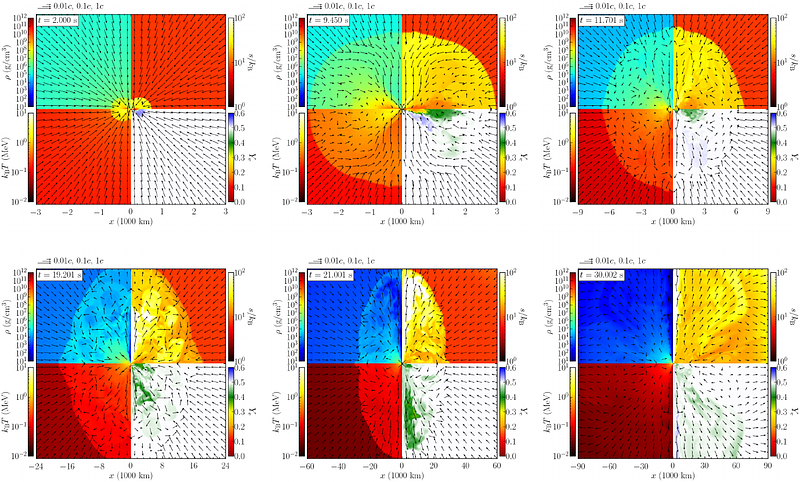Self-consistent scenario for jet and stellar explosion in collapsar: General relativistic magnetohydrodynamics simulation with dynamo

Self-consistent scenario for jet and stellar explosion in collapsar: General relativistic magnetohydrodynamics simulation with dynamo
Masaru Shibata, Sho Fujibayashi, Shinya Wanajo, Kunihito Ioka, Alan Tsz-Lok Lam, Yuichiro Sekiguchi
AbstractA resistive magnetohydrodynamics simulation with a dynamo term is performed for modeling the collapsar in full general relativity. As an initial condition, a spinning black hole and infalling stellar matter are modeled based on a stellar evolution result, superimposing a weak toroidal magnetic field. After the growth of a massive torus around the black hole, the magnetic field is amplified in it, developing poloidal fields via dynamo. In an early stage of the torus growth, magnetic fluxes that fall to the vicinity of the central black hole are swallowed by the black hole and global poloidal magnetic fields that can be the source of the Blandford-Znajek mechanism are not developed. However, in a later stage in which the ram pressure of the infalling matter becomes weak, the magnetic field amplified by the black hole spin via the winding becomes large enough to expel the infalling matter by the magnetic pressure, and subsequently, a global poloidal magnetic field that penetrates the black hole is established, launching a jet along the spin axis by the Blandford-Znajek mechanism with the luminosity suitable for explaining typical long gamma-ray bursts. Together with the jet launch, the effectively viscous effect in the inner region of the torus and the magnetocentrifugal effect drive the stellar explosion with the explosion energy comparable to typical or powerful supernovae. We also find large amounts of synthesized $^{56}$Ni and Zn associated with the stellar explosion. In the presence of jet launching, $r$-process elements are weakly synthesized. The numerical results of the explosion energy, ejecta mass, and $^{56}$Ni mass are in a good agreement with those for observed broad-lined type Ic supernovae. Our result illustrates a self-consistent scenario for the gamma-ray-burst-associated broad-lined type Ic supernovae.